Bond LSC News
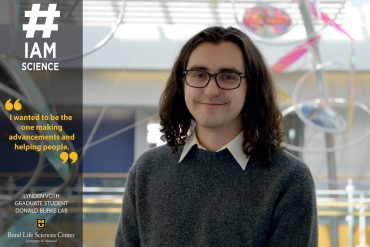
March 4, 2022
#IAmScience: Lynden Voth
By Cara Penquite | Bond LSC Invested in two to three hobbies at a time, Lynden Voth is not afraid to try something new. His flexible mindset – applied equally in his personal life and research – led Voth to discover his passion for molecular pathogenesis and therapeutics. “I was kind of in a completely different headspace when I first came here, and then as I started to do some research and understand what the labs were working on, I ultimately found an interest that I was not aware of before,” Voth said. Voth is a second-year…
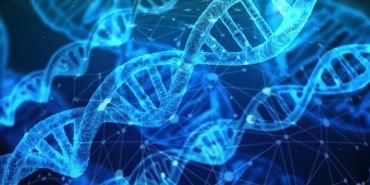
March 3, 2022
Protecting Plants: Researchers identify genes responsible for vital antimicrobial proteins
DNA is the genetic material that determines the characteristics of plants and animals. Using CRISPR gene editing, researchers altered the characteristics of rice plants. | Creative Commons Photo by Pixabay By Cara Penquite | Bond LSC A tickle in the throat, a stuffy nose, congestion . . . the tell-tale signs of a cold are familiar to most, and many know that with enough rest, the immune cells on standby in the human body will destroy any invaders. But what happens when plants get sick? The Bing Yang Lab from the Bond Life Sciences Center at the…
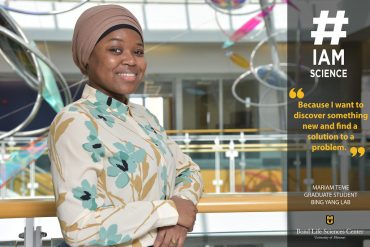
Feb. 25, 2022
#I Am Science Mariam Teme
By: Karly Balslew | Bond LSC Mariam Teme’s passion for plants started while growing up in Mali, West Africa, as she watched her father — an agricultural economist — interact with plants daily in the lush area where she grew up. “It’s like my own little bubble of peace when I’m surrounded by plants,” Teme said. Teme, now a member of the Bing Yang lab, planned to study agriculture for her bachelor’s degree but her university in Istanbul, Turkey, only offered genetics and bioengineering. However, integrated it with plant life for her future career. “I thought…
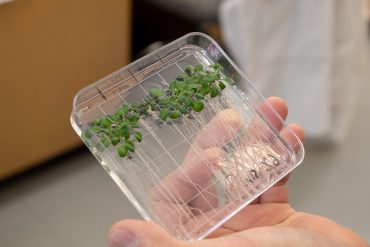
Feb. 24, 2022
Another piece of the pathway: Stacey lab identifies enzyme key to regulating plant metabolism
Researcher Sung-Hwan Cho holds mutant Arabidopsis thalianas. The Gary Stacey lab used these mutant variations to study how plants react to external stressors. | Photo by Karly Balslew, Bond LSC By: Karly Balslew | Bond LSC When we get hurt, our body signals our brain to warn us about stress and damage. We acknowledge the damage and then initiate the proper steps to heal. Plants may have different receptors that read these stress signals, but the process is similar. “When someone crushes the plant tissue, this triggers their immune system like us,” said Sung-Hwan…
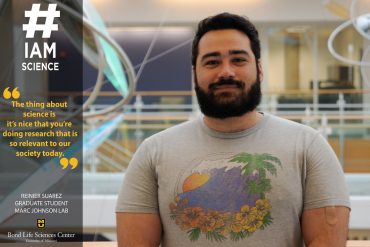
Feb. 18, 2022
#IAmScience Reinier Suarez
By Cara Penquite | Bond LSC When one of Reinier Suarez’s undergraduate professors suggested he go to graduate school, he was confused. “I had never heard of a Ph.D. in my life,” Suarez said. Three years later, Suarez is a first-year graduate student studying COVID-19 variants. Suarez came to Mizzou as part of the university’s Post-Baccalaureate Research Education Program (PREP), a stepping-stone between his undergraduate studies at Florida International University and his graduate studies at MU. He joined Marc Johnson’s lab at Bond Life Sciences Center as a PREP scholar and liked it enough to stay…
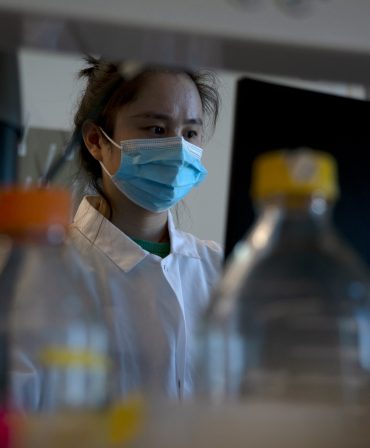
Feb. 17, 2022
Pancreatic tumor composition provides insight on treatment response
Jing Zhou focuses the microscope through her computer. The microscope feeds its view directly to her screen so Zhou can see the pancreatic cells. | Photo by Cara Penquite, Bond LSC By Cara Penquite | Bond LSC Not all tumors are created equal, and potential treatments aren’t universal. When it comes to pancreatic cancer, surgery and radiation often do more harm than good due to its rapid growth and ability to spread to the liver. Searching for alternative treatment options, Jing Zhou focused her research on immunotherapies. That led Zhou and her team to identify the sequences…
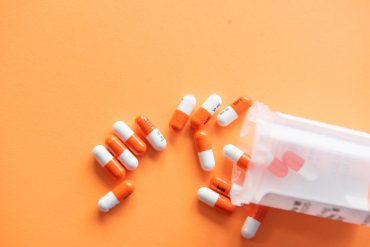
Feb. 9, 2022
Old Drugs, New Application: Artificial Intelligence Aid Future Breast Cancer Treatment
Photo by Christina Victoria Craft on Unsplash By Karly Balslew | Bond LSC New drug treatments take time and money to develop, especially with diseases as complicated as cancer. Developing a new drug to help cancer patients can take up to fifteen years and can cost roughly $1.6 billion, according to a paper published in the journal Cancers. With this in mind, researchers at the University of Missouri aim to capitalize on drugs that already exist. Using advanced computing, they are turning to FDA-approved drugs to repurpose, or reposition, for future cancer treatments. “The motivation…
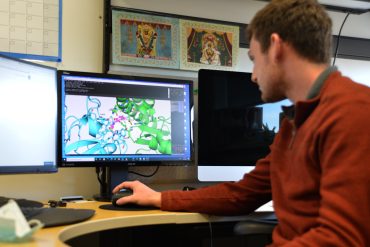
Feb. 2, 2022
Outlining Omicron: researchers determine key mutations in the latest COVID-19 variant
Bond LSC and UNMC scientists explain mutations unique to the Omicron variant Austin Spratt, undergraduate mathematics student in the Kamlendra Singh lab, shows protein models of the Omicron spike protein and the receptor it attaches to when infecting cells. “The genetic codes are used to identify the mutations, and then we use the structure to see how it would change over time. It’s going to give us more information about new mutations that occur,” Spratt said. | Photo by Cara Penquite, Bond LSC By Cara Penquite | Bond LSC It took eight days for…
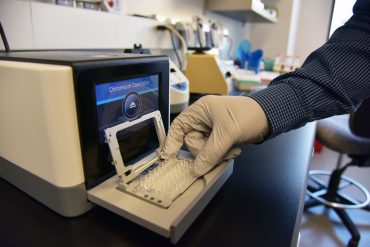
Dec. 20, 2021
New method leads to discovery of placental cell type
Nathan Bivens, director of the Genomics Technology Core at Bond Life Sciences Center, loads the Chromium 10X Genomics machine as part of the single-cell RNA sequence method. | photo by Lauren Hines, Bond LSC By Lauren Hines | Bond LSC During pregnancy, the fetus and mother can talk to each other without saying a word. On a deeper level, a special cell called the syncytiotrophoblast facilitates this conversation by changing the mother’s physiology based on what the fetus does or does not need. The Michael Roberts lab at Bond Life Sciences Center knew there had to…
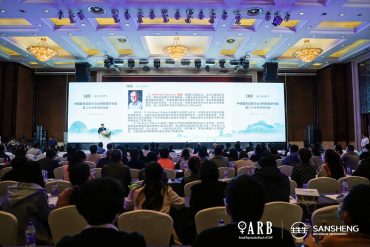
Dec. 8, 2021
Bond LSC Researcher Wins Awards for 45-Year Career in Reproductive Biology
Even though Roberts couldn’t accept the award in person, the Chinese Association of Animal Science and Veterinary Medicine still held an award ceremony and presented the medal to one of Roberts’ past associates. | photo contributed by Michael Roberts, Bond LSC. By Lauren Hines | Bond LSC Still in the lab after 45 years, chancellor’s professor emeritus Michael Roberts has received recognition for his career in reproductive biology research. Roberts won the Marshall Medal from the UK Society for Reproduction and Fertility (SRF) in August and the Gold Medal and Honorable Membership of the Animal…
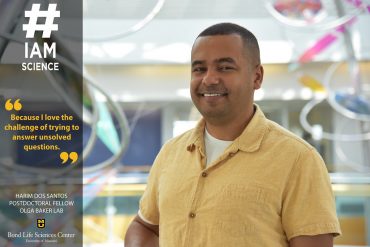
Dec. 3, 2021
#IAmScience Harim Dos Santos
By Lauren Hines | Bond LSC Don’t mistake Harim Dos Santos’ kind demeanor and introspective silence for a lack of ambition. On the contrary, his head is full of reflection and big dreams. Coming from Brazil, Dos Santos has achieved quite a few of those dreams including researching at an American university. Dos Santos is now a postdoctoral fellow in the Olga Baker lab at Bond Life Sciences Center, developing ways to treat salivary gland damage in head and neck cancer patients and in Sjögren’s syndrome patients. “I’m loving it [here], really,” Dos Santos said. “It’s good…
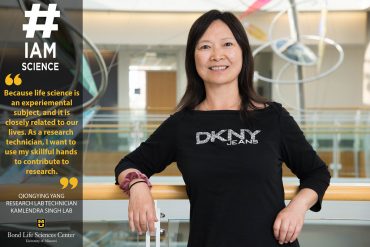
Nov. 19, 2021
#IAmScience Qiongying Yang
By Lauren Hines | Bond LSC In the mornings after her usual walk on the local trails, research technician Qiongying Yang heads to the Kamlendra Singh lab. Her desk is surrounded by large empty beakers and the windowsill houses two big, beautiful flowerpots she gave her desk mate. Her soft-spoken manner, warmth and mathematical talent aided her in helping multiple labs throughout Bond Life Sciences Center for the past 17 years. Yang came to the US from China in 1999. In 2003, she came to Mizzou and found herself as a research technician at Bond LSC a…